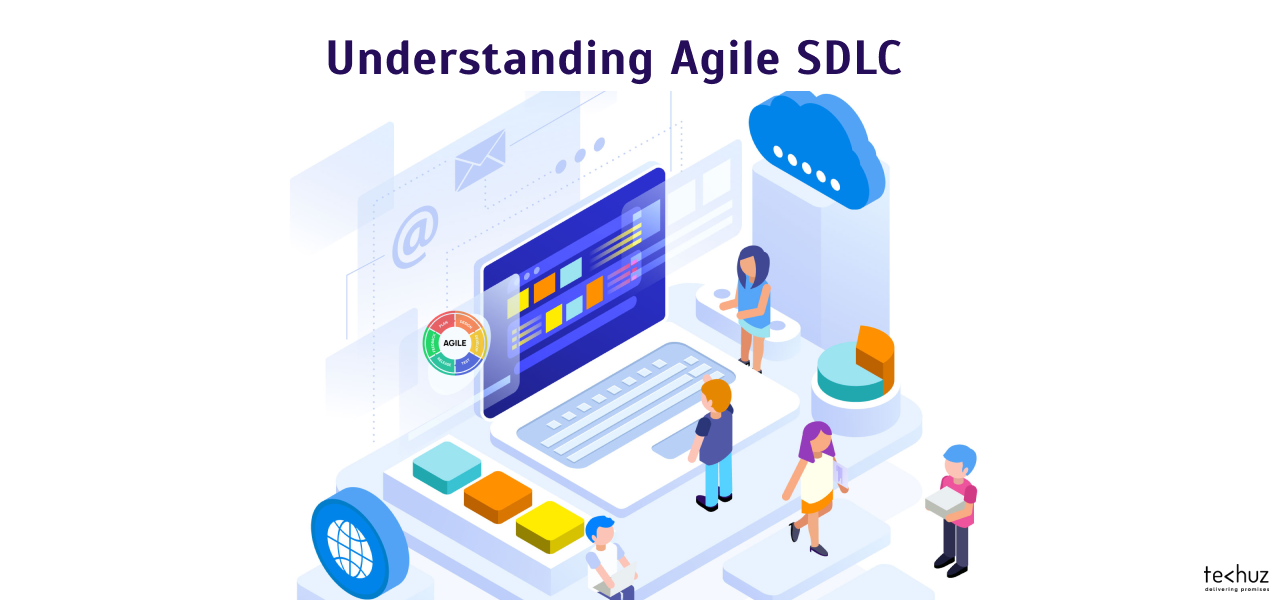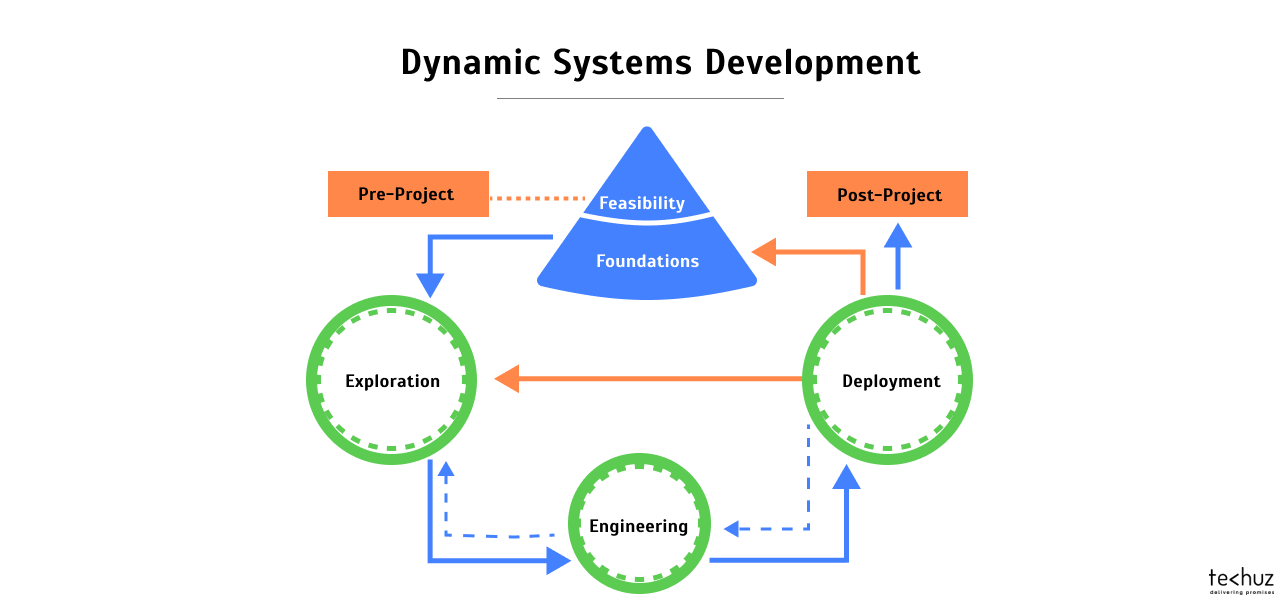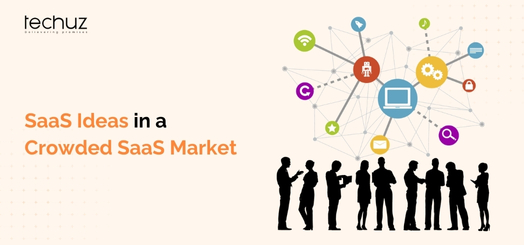Posted on
July 29, 2021
Updated on
March 21, 2024
Read time
 12 mins read
12 mins read
Quick Summary: Agile is an iterative and incremental approach to software development. It helps teams and businesses meet the modern development needs of continual updates, fast and frequent delivery, and top-notch quality. To successfully implement Agile to your project, you’ll need a fine understanding of its core values (Agile manifesto and principles), its workflow, and its frameworks (Scrum, Kanban, XP, etc.). This article will walk you through all of these.
The concept of Software Development Life Cycle or SDLC was popularized in the 60s. The idea was to formalize the development process with defined stages to produce high-quality software. But with time, development requirements changed. And traditional SDLCs — which were more focused on process — were not efficient enough for modern demands. There was a need for a new approach.
Enters Agile SDLC, a flexible software development method focused on adapting to changes, rapid time to market, continuous improvement, and customer satisfaction.
This SDLC led to a new norm: Developing and delivering a working chunk of the software in iterations and improving it incrementally. Businesses — huge organizations and startups alike — have experienced high success rates, revenue, better products, and management. So it’s absolutely worth understanding this modern SDLC — the Agile model.
In this article, we’ll walk you through what exactly Agile SDLC is, help you understand the Agile mindset through its core values, different Agile frameworks to apply the approach, and some handy tips to get started.
Table of Content
What is Agile SDLC?
Agile SDLC offers a flexible approach to software development for a fast-paced environment and changing customer needs. It aims to deliver the working software quickly, adapt to the changes arising during the process, and constantly improve it.
This is something that the traditional SDLCs lack. Their excessive focus on planning, processes, documentation, and one-shot release makes them less responsive to change and even slower delivery time. But not Agile.
Agile follows an iterative and incremental development approach. It divides the development tasks into iterations, and the team continually works to develop the software in increments. So instead of launching the software in one big shot, it regularly delivers small working chunks. This enables quick response to changes and fast time to market.
To better understand and apply the Agile way of development, you must internalize the agile mindset; the core values mentioned in the Agile manifesto. Let’s take a look at it.
Understanding The Agile Manifesto
Agile defines its core values for software development in the Agile Manifesto. When adopting Agile SDLC these are the values that the team needs to live by.
The manifesto put emphasis on making the development process people-oriented, output-focused, collaborative, and adaptive. The following are the 4 Agile values.
1. Individuals and interactions over process and tools
2. Working software over comprehensive documentation
3. Customer collaboration over contract negotiation
4. Responding to changes over following a plan
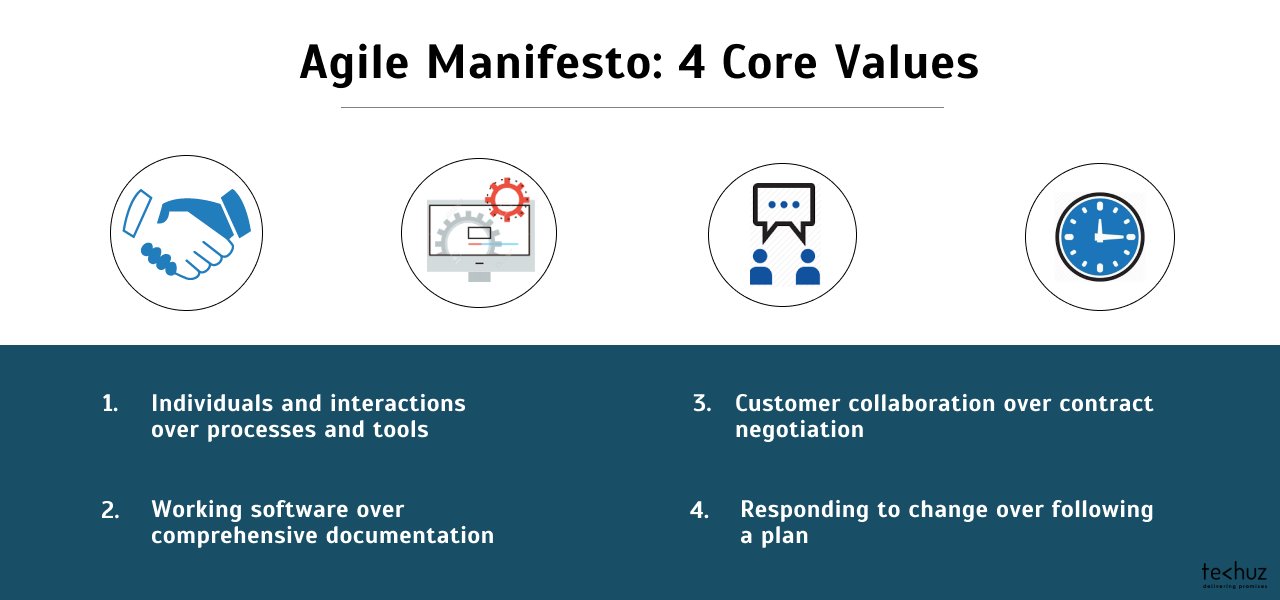
(Agile Manifesto — the core agile values)
1. Individuals and Interactions Over Process and Tools
Agile focuses on people and interaction in software development. Because it’s the people — the team, the client, the stakeholders — who understand needs, respond to the change, and enable the development.
In Agile SDLC, processes and tools are important, but they are given less value as they may hinder the agility of the software development.
2. Working Software Over Comprehensive Documentation
Drafting documentation is a time-consuming process. It requires defining the technical requirements, specifications, plans, and getting approvals delays the development. Further, documentation also breeds rigidity. All these are against the Agile way which focuses on delivering software quickly and frequently.
However, it doesn’t entirely eliminate the documentation. The idea here is to focus on completing the deliverable from the first day itself, and not to get bogged in heavy documentation.
3. Customer Collaboration Over Contract Negotiation
In traditional methodologies, customers are involved only during the negotiation before the project starts and for feedback after the delivery. Which often doesn’t yield the desired project outcome.
So Agile focuses on customer collaboration by involving them throughout the project lifecycle — not just during the contract negotiation. This enables continual feedback and ensures that the final product meets the client’s requirements.
4. Responding to Changes Over Following a Plan
Traditional SDLCs avoid any changes that come up once the development starts. It solely focuses on following the plan made at the previous stage. This makes it difficult to change or even improve the software once the development starts.
But Agile SDLC believes in welcoming the changes. The team adapts the software to the changing needs of the client and market. This makes it feasible to deliver a better product to the end-user.
12 Agile Principles
While the manifesto outlines the central theme of Agile, the principles give you tangible ways to achieve agility in your project. Here, check these 12 principles that’ll help you get a sharp understanding of Agile SDLC.
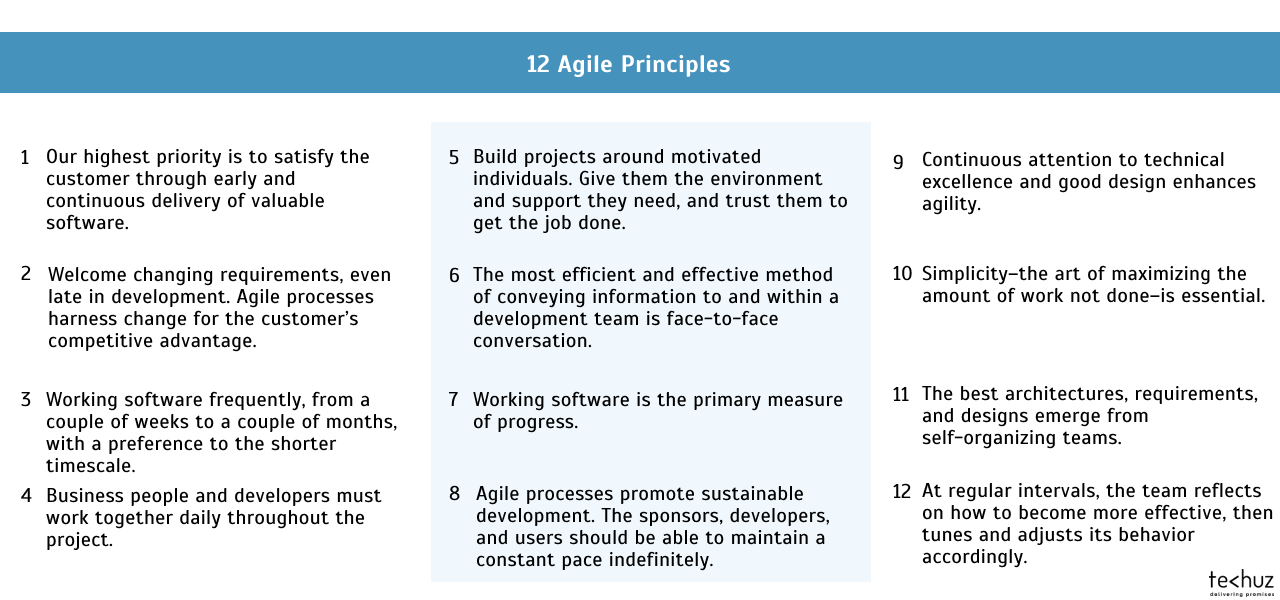
(12 Agile Principles describing more tangible ways to the Agile approach)
- Customer Satisfaction: The highest priority is to satisfy the customer through early and continuous delivery of valuable software.
- Welcome Change: Welcome changing requirements, even late in development. Agile processes harness change for the customer’s competitive advantage.
- Deliver Working Software: Deliver working software frequently, from a couple of weeks to a couple of months, with a preference to the shorter timescale.
- Team Collaboration: Business people and developers must work together daily throughout the project.
- Motivated Individuals: Build projects around motivated individuals. Give them the environment and support they need, and trust them to get the job done.
- Face-to-Face Conversation: The most efficient and effective method of conveying information to and within a development team is face-to-face conversation.
- The measure of Progress: Working software is the primary measure of progress.
- Sustainable Development: Agile processes promote sustainable development. The sponsors, developers, and users should be able to maintain a constant pace indefinitely.
- Continuous Attention: Continuous attention to technical excellence and good design enhances agility.
- Simplicity: Simplicity— the art of maximizing the amount of work not done — is essential.
- Self-Organizing Teams: The best architectures, requirements, and designs emerge from self-organizing teams.
- Reflect and Adjust: At regular intervals, the team reflects on how to become more effective, then tunes and adjusts its behavior accordingly.
The Agile Workflow
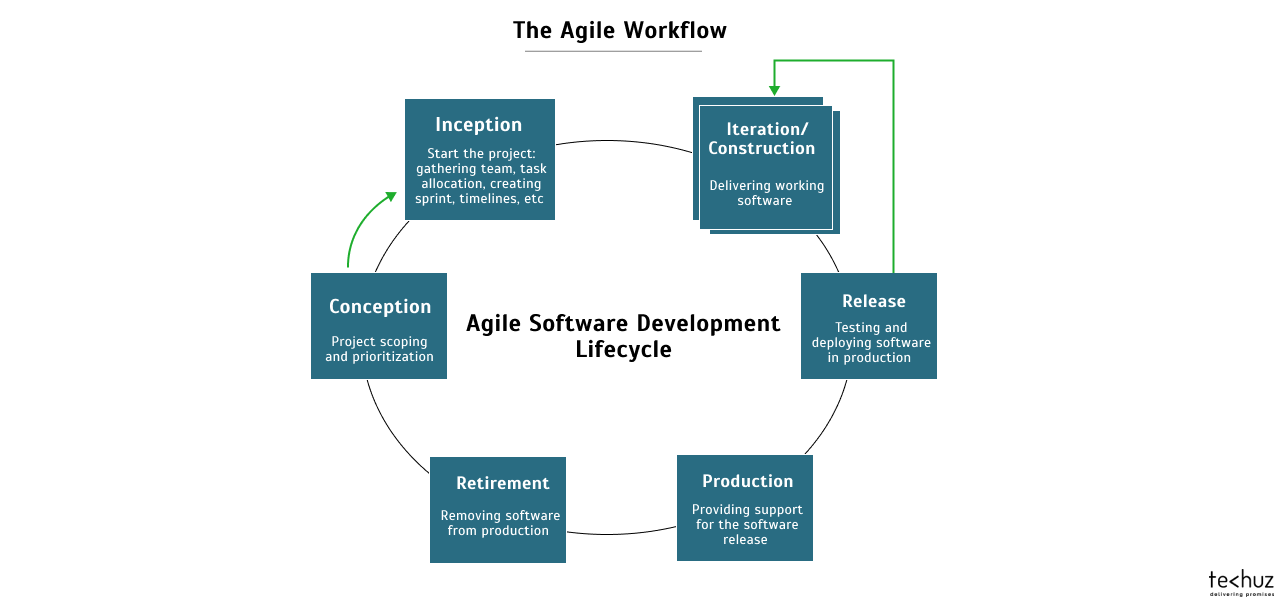
(Standard Agile workflow)
1. Conception
This is the first stage of the Agile software development life cycle. The team starts with analyzing the project needs and determining the scopes. A number of crucial decisions are taken such as defining the business opportunity, key goals and tasks, and the effort required to accomplish them. Based on this, the product backlogs are created and iterations are planned.
2. Inception
After scoping out the project, the team is gathered and members are allocated the respective tasks. Along with that, requirements and objectives are determined with clients and stakeholders. A timeline of the iteration is created for the team to complete the tasks within the time frame. Once done the iteration is ready to kick off.
3. Iteration
Now, this is the stage where the development begins. The team starts working on the iteration and by the end of it, they’ll deliver working software. The software will have just the necessary functionalities during the first iteration. But with each new cycle, more features are added and the product is improved until the completely developed.
The duration and process of iteration are based on the Agile framework which is typically one to four weeks. The scope of work in each iteration is kept to be obtainable in this allotted time. A number of iteration are conducted during the lifecycle, each passing through the users’ and stakeholders’ feedback.
4. Release
Before the final software goes into production, it goes through meticulous tests: quality checks, user tests, functionality tests, debugging, and the issues are solved. User documentation is also finalized at this stage.
5. Production
Once the software is live, it enters the production phase. This phase involves providing support for the software release. The team ensures it works smoothly and resolves any arising issues.
6. Retirement
This is the final stage of the software lifecycle. The team removes the software from production and notifies the customers about it. This typically happens either when the software gets redundant or new a release is introduced.
Popular Agile Frameworks
So far you know that Agile provides a flexible way of developing software; its values, principles, and workflow facilitates both adaptiveness to changes and faster delivery.
But there’s more to it.
There are a number of Agile frameworks that provide a refined workflow depending on the development requirements. Consider these frameworks as different approaches that help you implement Agile. Here, check these most popular Agile frameworks.
Scrum
Scrum is the most commonly used framework to implement Agile. It follows a team-centric approach describing clear roles, responsibilities, and process flow. Scrum is characterized by its ‘sprint‘ — an iteration of 2-4 weeks during which a working part of the software has to be delivered regularly. A sprint starts with planning and concludes after the planned software is delivered.
Scrum also defines three artifacts that work a metadata points and the team has to frequently revisit them.
1. Product backlogs – These are the ‘to-do’ list of the tasks to build the product: features, bug fixes, enhancement, etc.
2. Sprint backlogs – These are the list of the tasks taken from the product backlogs to implement during the sprint. Each sprint starts with planning the sprint backlogs.
3. Product Increment – It is the working software delivered at the end of the sprint.
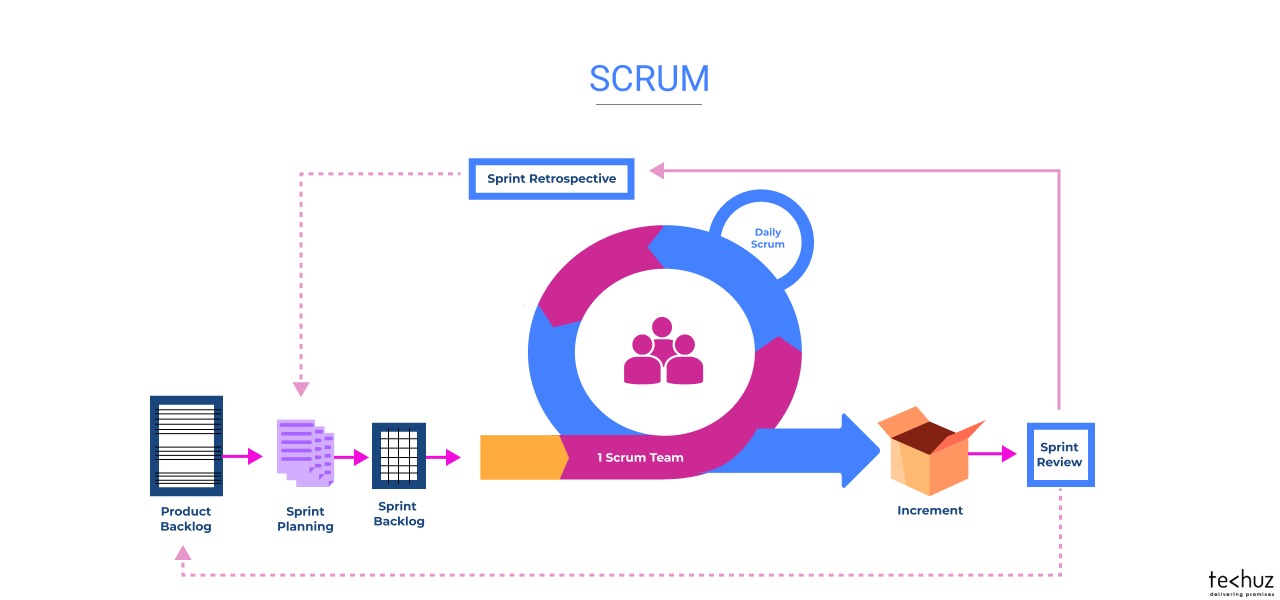
(Scrum workflow)
Kanban
Kanban is another extensively used Agile framework. Although it was originated decades ago in manufacturing, it is highly applicable in Agile and DevOps software development.
Kanban helps you visualize the tasks and promotes small but continuous enhancement. A Kanban board is used to represent the workflow: To Do, In Progress, and Done. This is a basic workflow but the team may add more depending on the needs.
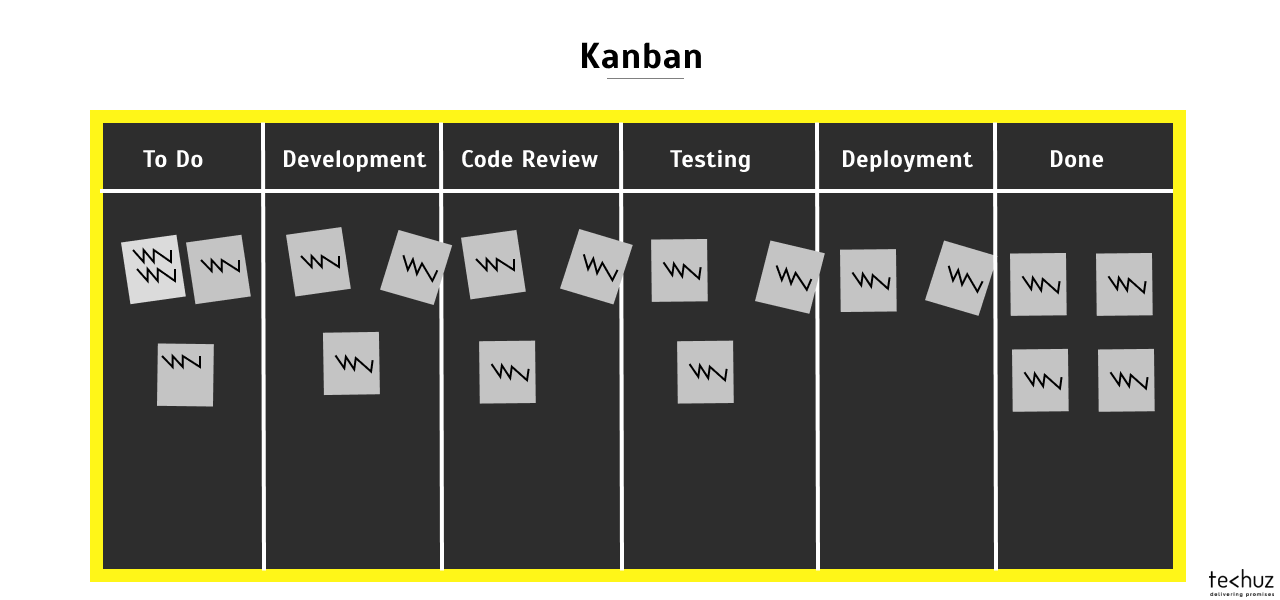
(Example of Kanban Board)
Lean Software Development
Lean software development method is adopted from Toyota Production System. The main focus of this framework is to maximize business value to the customer with minimum resources. The framework offers the principles, values, and best practices to support Agile development. It summarizes 7 key principles for software development.
- Eliminating the waste
- Fast Delivery
- Amplify Learning
- Build Quality
- Respect Teamwork
- Delay the commitment
- Optimizing the whole system
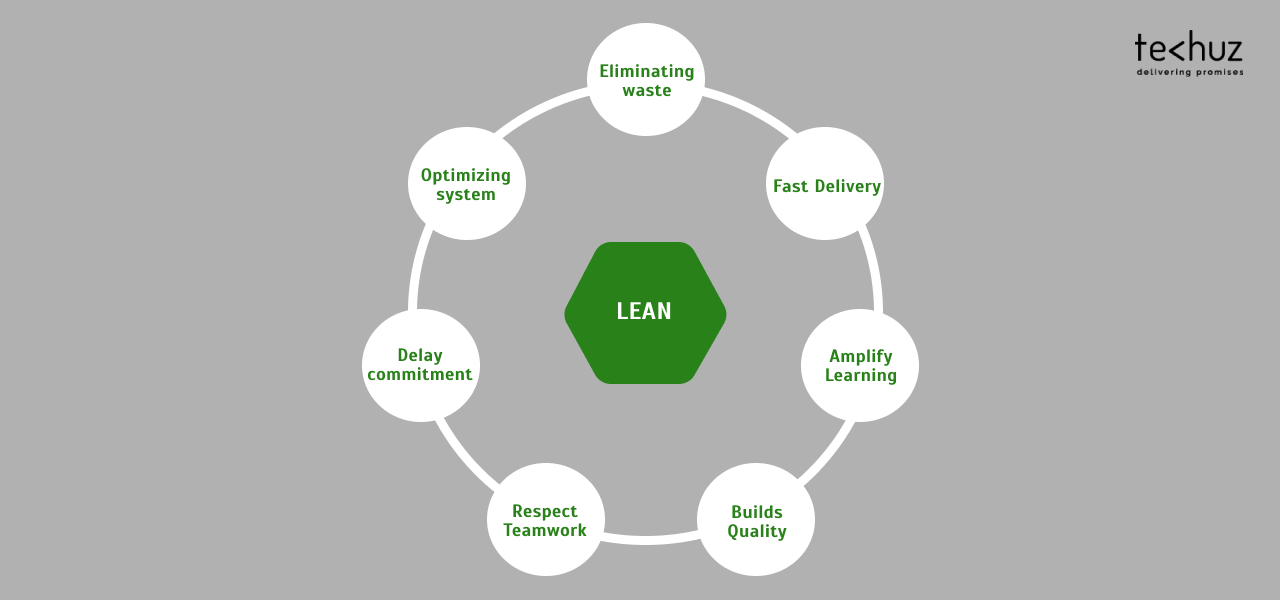
(7 Principles of Lean Software Development)
Suggested Read: Popular Minimum Viable Product Examples
Extreme Programming (XP)
Extreme programming or XP is among the earliest Agile framework and was widely used before Scrum became popular. The method provides very specific guidelines for software development and best practices. These guidelines and principles distinguish it from other methods and enable you to deliver high-quality software. Here, check these 12 XP development practices categorized into four different groups.
| Category | Practices |
|---|---|
| Feedback |
|
| Continual Process |
|
| Code Understanding |
|
| Work Conditions |
|
Feature-Driven Development (FDD)
Feature-Driven Development (FDD) is a feature and customer-centric Agile method. Features are at the core of this method encouraging the team to build the product bit by bit. It has an iteration cycle of 2-10 days, in which the planned feature has to be delivered. A typical development process includes the following 5 key activities.
- Develop overall model
- Build feature list
- Plan by feature
- Design by feature
- Build by feature
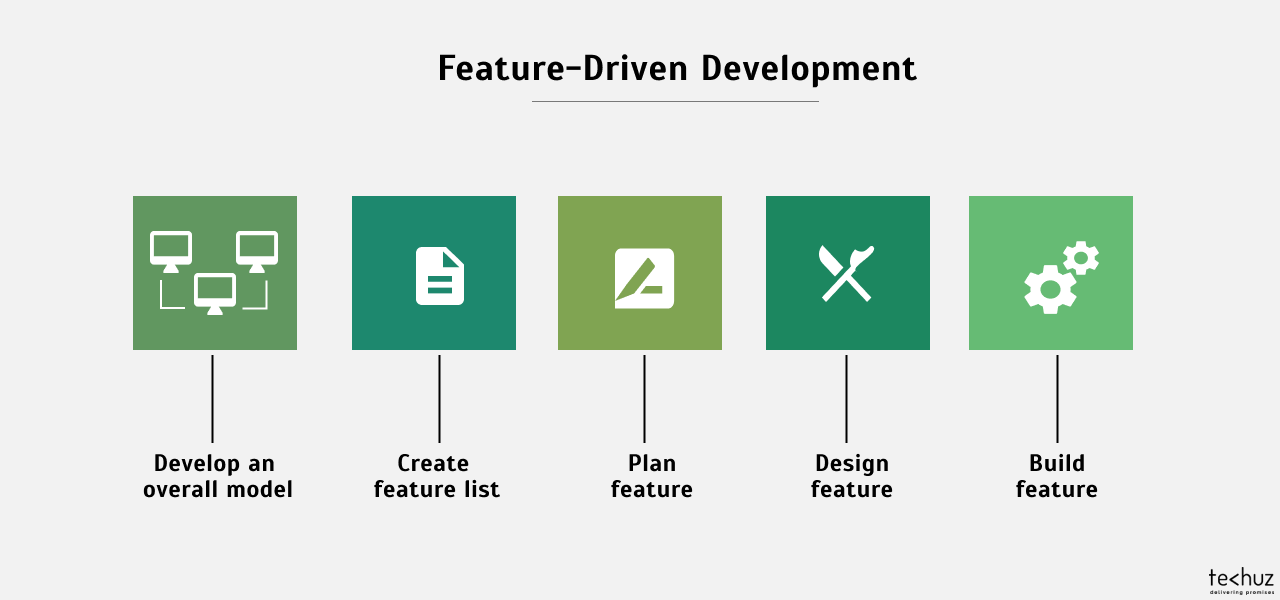
(FDD development process)
Crystal
Crystal has been directly extended from the Agile Manifesto. This makes it a simpler and more straightforward Agile method. Ideal for a team of 6-8, it mainly focuses on development through interaction, client collaboration, and early and frequent delivery — the core Agile values.
Dynamic Systems Development (DSDM)
Dynamic System Development or DSDM is a business-focused method that provides predictability, consistency, and control. Although it embraces the core Agile principles it is more leaned towards governance which makes it less flexible compared to other methods on the list.
Implementing Agile SDLC to Your Project
Now you must have a clear understanding of Agile SDLC — its values, workflow, and different frameworks. And if it seems to be the ideal approach to develop your project, here’re some quick tips to get started.
1. Help Your Team and Stakeholders Understand Agile
The first step to implement Agile is to have the team, clients, and other stakeholders understand this approach and get them on board. Collaboration is the core of Agile and you need the involvement of everyone for smooth working and best results.
2. Incorporate Agile Mindset
The team has to internalize the Agile mindset; the core values in the Agile manifesto. You’ll need to help them understand and adopt the Agile mindset: communication, collaboration, welcoming changes, time-boxing, and releasing the software frequently.
3. Prioritizing is Crucial
This is the key element to delivering software that provides value quickly. You must understand and prioritize the features for development that have a huge impact and provide more value.
4. Pick the Right Agile Framework
Choose the Agile framework that suits your project and business goal. Working with the right framework will help you manage the software lifecycle efficiently and get better results.
5. Motivate and Empower the Team
Agile is fast-paced and you need to make rapid progress. So you must have a motivated and empowered team that can accomplish it. You must provide the support to help them make decisions within the team, and at the same time, the team must be highly skilled to make the right decisions.
Wrapping up
To summarize, Agile is the ideal software development approach when you need to embrace the ever-changing customer needs and at the same time delivering quality software fast and frequently. Organization adopting Agile has experienced massive success and you can experience it too if you implement it the right way.
Hope this article has helped you get a clear understanding of Agile SDLC, and if you are looking to develop your web or mobile-based application with this approach, we can help. Just drop us a line and experts will get back to you.
